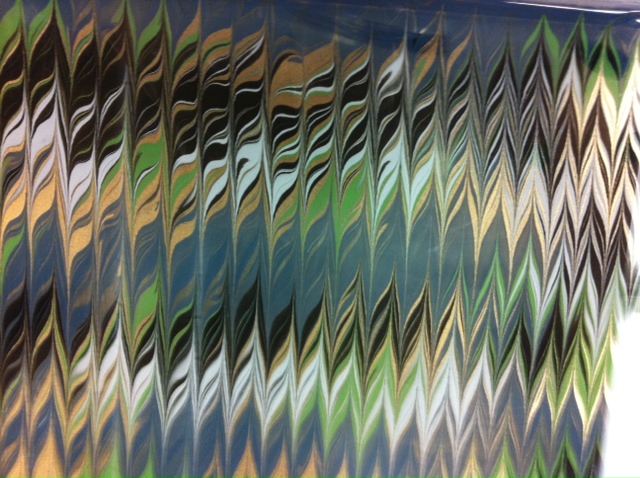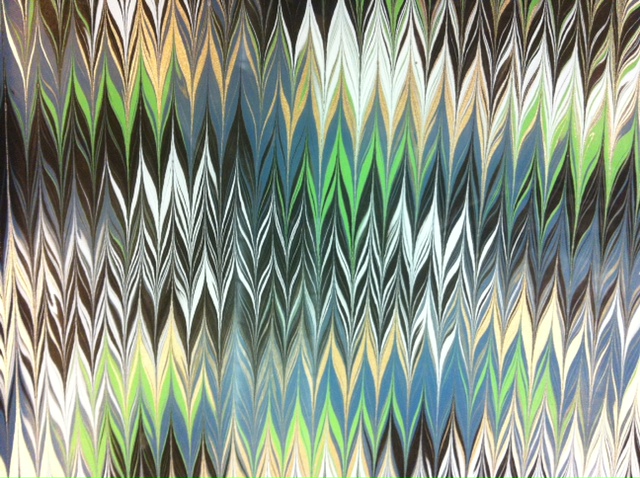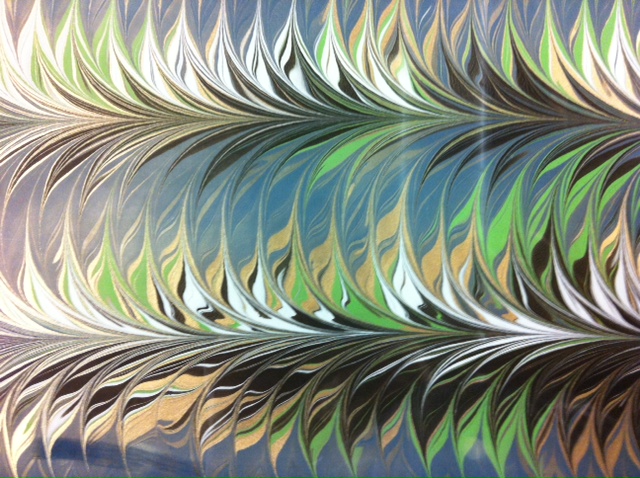The Chevron marbling pattern is one of three basic patterns on which most other patterns are built; that makes it important! It is the pattern that starts with drawing a one-inch comb across the vat and then bisecting the first pass in the opposite direction. Next, you shift sides and use ½ comb to move across the first passes and bisect again. It is that last bisection many people find challenging to do well.
The problem looks like this (see the upper left portion of the picture):

instead of this:

In the problem picture above, see how what started as a bisection on the right side changed and the comb appears to have moved to mirror the first combing as it progresses to the left in the picture. That lack of consistent bisection means that patterns built on the problem combing will look like this (the problem can now be seen on the lower left side of the picture below.

The basic cause of this problem is the size in the vat shifts while you are doing the second bisected pass of the chevron. Using the half-inch comb it is hard to bisect! Here are some tips that have helped me succeed or at least better understand what is happening.
- On that final pass, place the comb so that any extra tines of the comb are all outside one side of the vat. This will give you some fudging room to move if the size shifts.
- Don’t touch the sides of the vat to anchor your last bisection. Putting your fingers on the sides of the vat is a good way to steady your hands most of the time. BUT, if you have a plastic vat your fingers can add pressure to the side of the vat and cause the size to shift. If you have a metal vat sometimes the sides are not super straight and that can cause the same kind of problem.
- Go slowly as you make that final pass! You do not want to cause the size to shift except right around the pin. Speed can cause waves.
- Practice is a major help to learning how to do this right!
A Trick: If all else fails, make a special set of combs. One on which the tines are 1 ¼ inches apart and one on which the tines are ¾ inches apart. You wouldn’t think that adding a ¼ inch would have such a positive effect!
